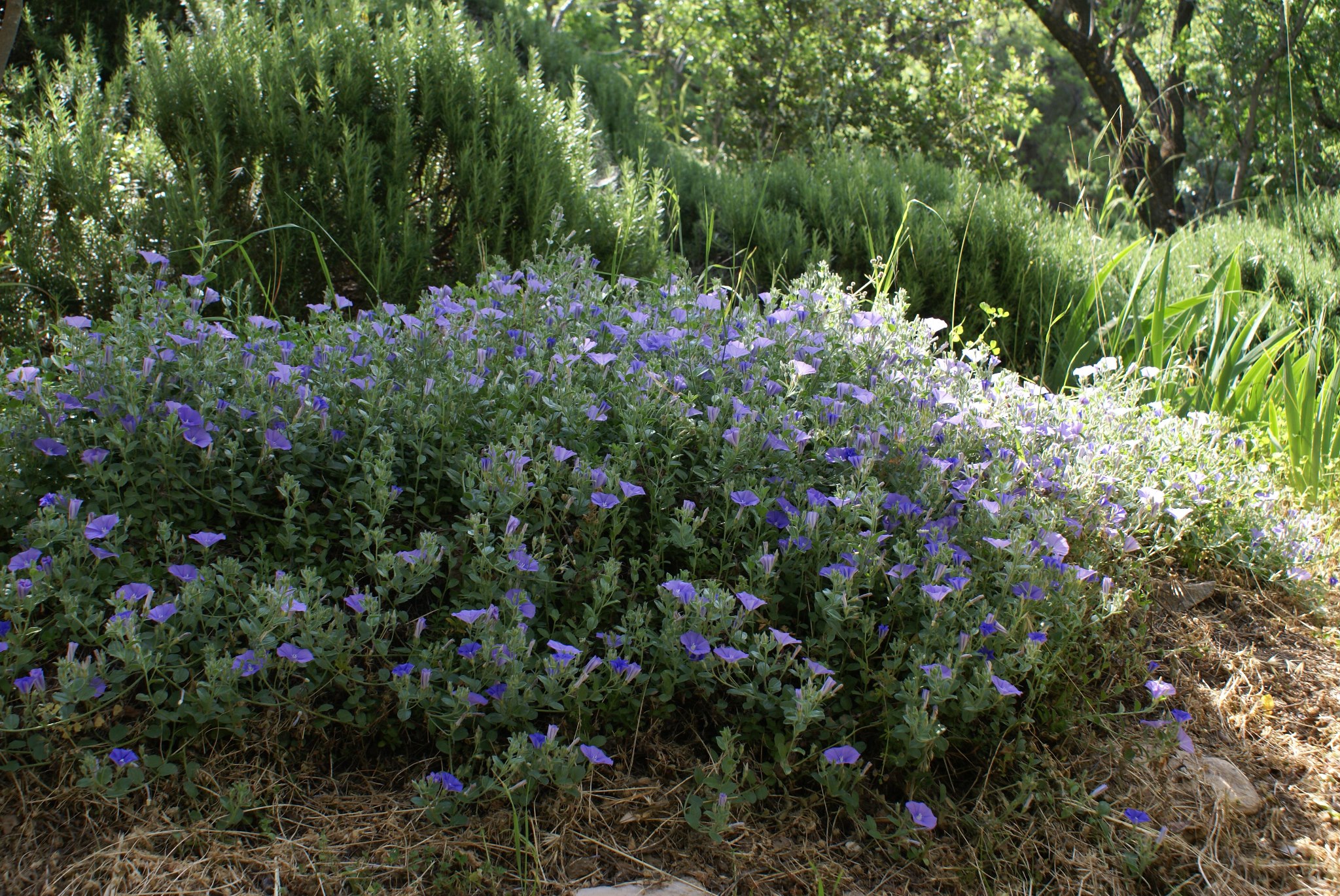The Philodassiki Botanical Garden today
The garden originally established in 1964, on land near the Monastery of Kessariani, was the home of over 200 different species of plants from Southern and Central Greece, the Aegean islands and Crete. Later, we undertook to open the garden to special interest groups and due to the tireless efforts of the preceding custodians who had designed the paths, retaining walls and planting areas, we were able to re-establish the garden as a botanical entity. Our effort has been to keep the unique natural wildness of the locates consistent with the presentation of the botanical collections. With the collaboration of botanists specialized in Plant Systematics, the labeling and tagging of existent plants has been mostly achieved. At the same time a number of new plants have been found and are waiting for the suitable season to be introduced to the garden. The garden displays many elements of the Mediterranean ecosystems. It has in the same place a rich collection of bulbs, many shrubs (“maquis”), brush bushes (“phrygana”) and certain conifers. In what appears to be barren land grow a great number and variety of flora which include perennials, annuals and bulbs. There are other sites, with deeper and more humid soil, such as the ones, in proximity to a small stream which crosses the garden. There also exist some aquatic plants in the three small ponds.
Purpose of the Philodassiki Botanical Garden
The aim of the garden is threefold: conservation, education and pleasure. The conservation of rare and threatened with extinction species is the primary purpose of most botanical gardens today. We too are very concerned with the ever increasing growth of plants on the Red Data Book list. Of paramount importance is, therefore, the existence of the nursery of Philodassiki for the multiplication of threatened plants and their reintroduction to the garden. We hope thus to contribute to the propagation of many species. The nursery also serves another important goal; the education of the general public by helping them choose and recognize the worth of plants that are part of their local environment, rather then unsuitable and expensive imported plants.
Last, but not least, is the pleasure derived from walking, looking and observing the rich variety of flora evident in the garden. This seemingly effortless pleasure, contributes nevertheless to a greater understanding of nature and its importance both to the individual and to mankind.
Plant presentation
Because of the particularities of the site, the plants are placed according to their natural demands, such as soil, light and orientation, the chasmophyta in rocky sites, the brush bushes at barren rocky, sunny places the more mountainous varieties and plain growing plants at richer and irrigated sites, the plants of the mountain forest at shady and cool locations.
This however is not possible for the species whose demands differ. Additionally, as charming as the concentration of plants by geographical regions may appear, it has proven difficult, due to the great variety of the landscape. One can find seashore as well as alpine plants within a small area and at a radius of only a few meters.
General Data
Location: Aesthetic Forest of Mount Hymettus – Attica, Greece
Founded in: 1964
Area size: 8.000μ2
Longitude: 37ο58'
Latitude: 23ο48'
Altitude: 360μ - 410μ
Orientation: Northern - Northwestern
Rock: Schiste, limestone
Low absolute temperature: -3οC
Maximum absolute air temperature: +40οC
Annual rainfall (estim.): μέσο ετήσιο ύψος 400 χλσ.
Number of taxa: 560
Families represented: 74
Endemic to Greece: 78
Indigenous: 196
ATTENTION: The garden is currently not open to the public, except by special arrangement and only for small groups, because the narrowness of the space does not allow mass visits












